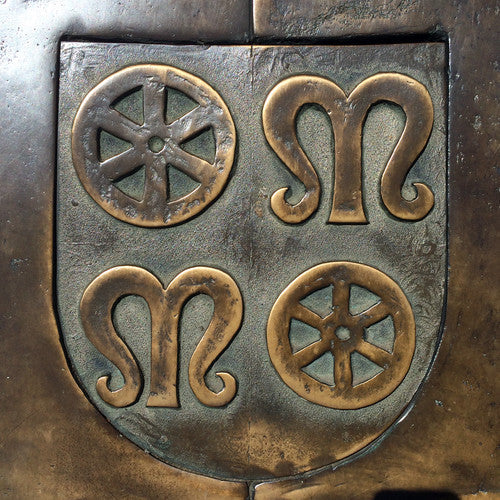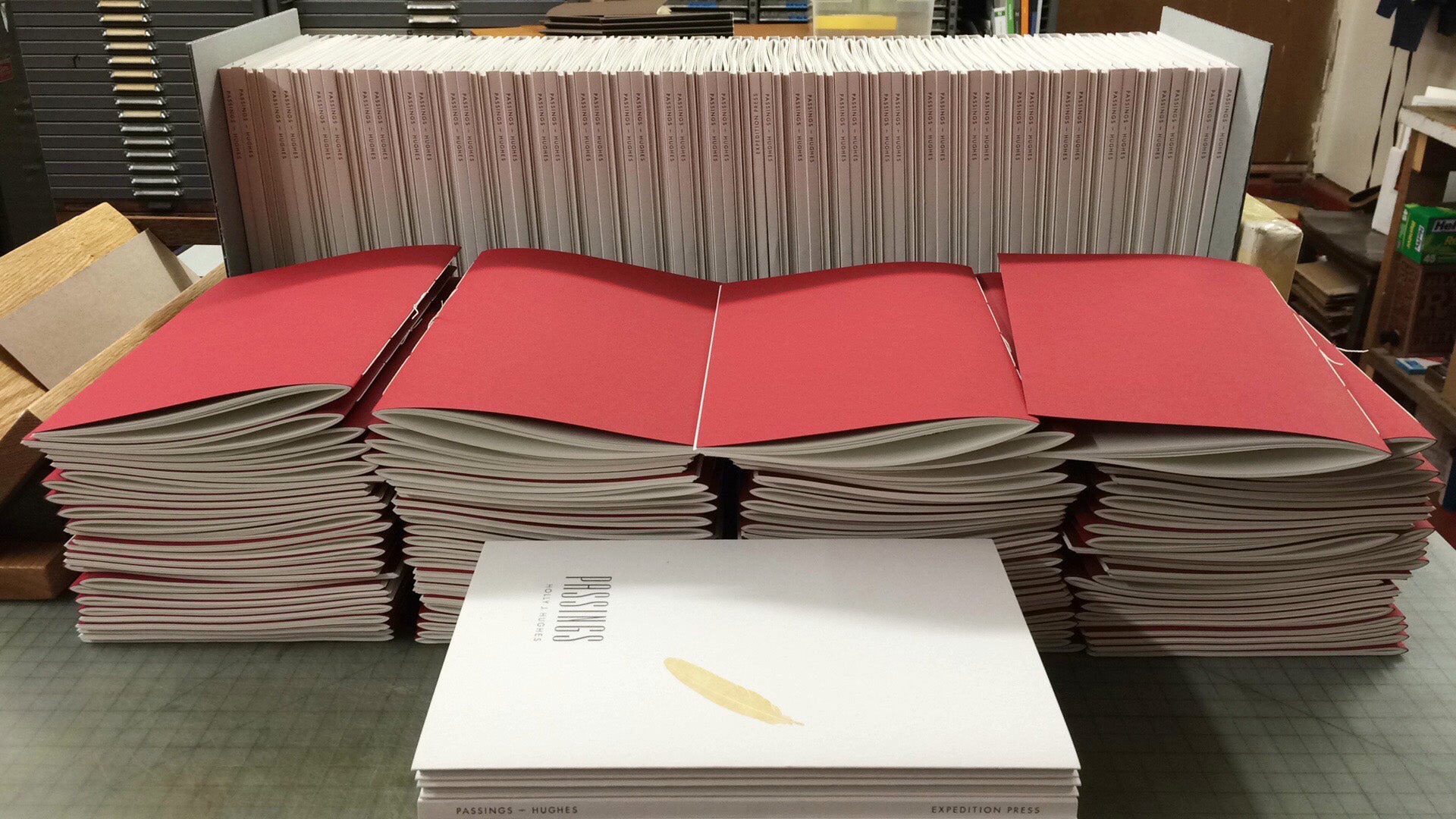Thousandth Time: Broadside Construction

“For the Thousandth Time, I want to Know” is a poem by Mark Nepo from his out-of-print book Inhabiting Wonder. I first imagined this piece nearly four years ago, and contacted Mark who generously gave me permission to reprint the poem. It was an ambitious project at the time, and I got about three-quarters of the way through before I abandoned ship. Over the course of a year I designed it, printed it, built all the frames, and scored each sheet by hand eight times and each hinge three times. Then I assembled the first full prototype and my morale plummeted. It just wasn’t as good as I wanted it to be. A classic example of what Ira Glass is talking about in this genius little video on beginners, and making things. I let my perfectionist get the better of me and put the whole darn project up high on a shelf, leaving it there to lurk in the corner through three studio moves and countless other projects.
For three years now I’ve alternated between forgetting about this project and feeling bad about it: guilty, dismissive, or just plain impossible. It’s been entered on to several hundred to-do lists without ever being crossed off. Until about a month ago. Something shifted and “Thousandth Time” moved from the “unfinished old crap” list in my mind to the “new work to be editioned” list. There were a few external motivating factors, but in reality I don’t know what made the project click over from one side of my mental divide to the other. The good news is it did, which made it feel possible to work on, and voila! Now its many pieces are covering my work table and the edition is more than half completed!

It also feels current, which is perhaps the most interesting thing of the whole matter. Because the fact is that when I began the project it was beyond my ability to execute from a technical standpoint. I could see it wasn’t as good as I wanted it to be but I simply did not have the experience and hand skills to improve it. Now, coming back to the binding process a good three years later, with a handful of large book editions under my belt plus a lot of one-off blank books, my hands are much more capable! And my eyes can see a lot more. It’s been an unexpected gift to pick up the pieces of this ‘old’ project and experience just how far I’ve come since I started it. Somehow my old self must’ve known it would be important work for my future self to complete.

“Thousandth Time” is a three-dimensional poetry broadside, printed on Japanese paper and bound on balsa wood frames with two-way hinge so it can open and close in both directions. I’m making it in an edition of 26. The design was inspired by traditional shoji screens, and a few smaller pieces built by Jules Faye for window displays. This broadside folds closed like a book and slips into a protective black soft-sided slipcase – which is a whole ‘nother pile of work. But hey that’s okay! I like work. Doesn’t everyone like work? One more prototype and the slipcases should be ready to edition.

The binding process for these screens is challenging and time-consuming. The materials are delicate and finicky and I designed it without considering the grain of the paper. The truth is I derived the overall dimensions from the paper itself, which I found in a dusty old box labeled “Antique Japanese Paper from Ralph” which must’ve been sitting for a couple decades itself. As it happens the grain is running short-wise which means the longer turn-ins are the more difficult ones. Here’s the process in a nutshell: first, I trim the corners of each sheet so that they’ll fold properly. Then I glue the frame to the sheet and place it under boards to dry flat. Now the turn-ins, the most difficult part. Head and tail are turned in first and the corners are wrapped with the tabs (cut in the first step). Then the sides are turned in, with generous amounts of PVA, some swearing, and a few deep breaths. Back under boards to dry flat. Then the hinges are attached to two frames at the same time so they line up, first to the front, then folded and scored against the frame. The last step is joining the two screens together by gluing the hinges on the back. Then back under boards, and they are left to dry closed under weight. This helps the finished pieces stay flat and also lets the hinges relax into their closed position.

On a personal note, my mother asked me to print this poem the year after my older brother died. So the project has a lot of grief tied up in it as well, which I am sure has played its own mysterious part in the stymied stop-and-go nature of working on it. I can’t help but note the time of year: there’s something about fall and the days getting darker, a general trend toward introspection that feels appropriate for coming back around to finishing this edition. I spent Nov. 1, the Day of the Dead, prototyping the slipcases which are all black. Who knows why we let certain things go, and when if ever we’re able to pick them back up? Some things can’t be rushed, and sometimes we’re not meant to know. Good craft has a way of being slow, as does healing when there’s a rift in your soul. I’ve thought of my brother Nathan a lot while working on this project, and I will continue to through the many slow hours left to finish it. “Thousandth Time” is dedicated not just to him, but to all of those we love, and see no more.

The edition is limited to 26, and limited copies are available for sale.



